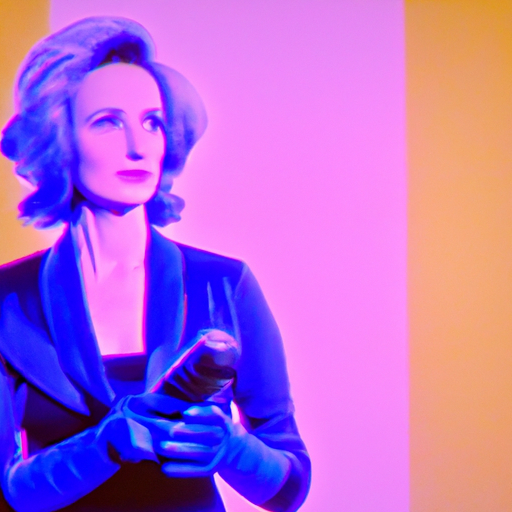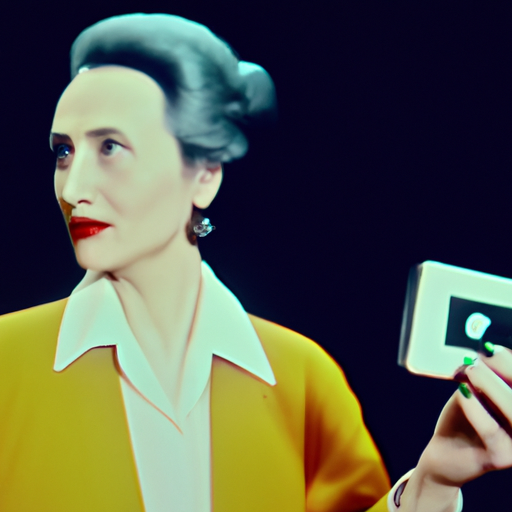
-
Table of Contents
Retro Futurism: Blending Past and Future in Design

Retro futurism is a design style that combines elements of the past with futuristic concepts, creating a unique and captivating aesthetic. It is a visual representation of how people in the past imagined the future, often characterized by sleek lines, bold colors, and a sense of optimism. This article explores the origins of retro futurism, its influence on various design disciplines, and its enduring appeal in contemporary culture.
The Origins of Retro Futurism
The roots of retro futurism can be traced back to the early 20th century, a time when rapid technological advancements sparked the imagination of artists, architects, and designers. The World’s Fairs held in the 1930s and 1960s showcased futuristic visions of what the world could look like, inspiring a generation of creatives to envision a future filled with innovation and progress.
One of the most iconic examples of retro futurism is the Art Deco movement of the 1920s and 1930s. Art Deco embraced geometric shapes, streamlined forms, and luxurious materials, reflecting the optimism and excitement of the era. This design style heavily influenced the aesthetics of retro futurism, with its emphasis on sleek lines and bold, contrasting colors.
Retro Futurism in Architecture
Retro futurism has had a significant impact on architecture, with many buildings incorporating futuristic elements while paying homage to the past. One notable example is the Marina City complex in Chicago, designed by architect Bertrand Goldberg in the 1960s. The cylindrical towers and flowing lines of the complex were inspired by the space-age aesthetic of the time, while the use of concrete and brick materials harkened back to the industrial past.
Another example is the Atomium in Brussels, Belgium, built for the 1958 World’s Fair. This iconic structure resembles a giant atom and symbolizes the optimism and scientific progress of the atomic age. Its futuristic design, with its interconnected spheres and stainless steel cladding, continues to captivate visitors to this day.
Retro Futurism in Product Design
Retro futurism has also left its mark on product design, with many designers drawing inspiration from the past to create futuristic objects. The Smeg refrigerator is a prime example of this blending of past and future. With its rounded edges, chrome accents, and vibrant colors, it evokes a sense of nostalgia for the 1950s while incorporating modern technology and functionality.
Another notable example is the Tesla Cybertruck, an electric pickup truck with a design reminiscent of 1980s sci-fi movies. Its angular, stainless steel body and futuristic features make it stand out from traditional pickup trucks, showcasing the influence of retro futurism in contemporary automotive design.
Retro Futurism in Graphic Design
Graphic design has also embraced retro futurism, with many designers using vintage-inspired elements to create futuristic visuals. The use of bold typography, vibrant colors, and geometric shapes reminiscent of the 1960s and 1970s can be seen in various contemporary designs, from album covers to movie posters.
One example is the cover art for the album “Random Access Memories” by Daft Punk. The design, inspired by retro sci-fi book covers, features a sleek, futuristic helmet against a vibrant background, capturing the essence of retro futurism and the electronic music genre.
The Enduring Appeal of Retro Futurism
Retro futurism continues to captivate audiences and inspire designers due to its ability to evoke nostalgia while offering a glimpse into an imagined future. The blending of past and future elements creates a sense of familiarity and excitement, appealing to both older generations who remember the past and younger generations who are fascinated by the aesthetics of a bygone era.
Furthermore, retro futurism allows designers to explore alternative futures that deviate from the current technological trajectory. By looking back at past visions of the future, designers can challenge existing norms and push the boundaries of what is possible, sparking innovation and creativity.
Conclusion
Retro futurism is a design style that seamlessly blends elements of the past with futuristic concepts, creating a visually striking aesthetic that continues to captivate audiences. From architecture to product design and graphic design, retro futurism has left its mark on various design disciplines, inspiring creativity and pushing the boundaries of what is possible.
By combining nostalgia with a sense of optimism, retro futurism offers a unique perspective on the future, allowing us to imagine alternative realities and challenge existing norms. As technology continues to advance, retro futurism serves as a reminder of the power of imagination and the enduring appeal of blending past and future in design.

Awesome news for all us